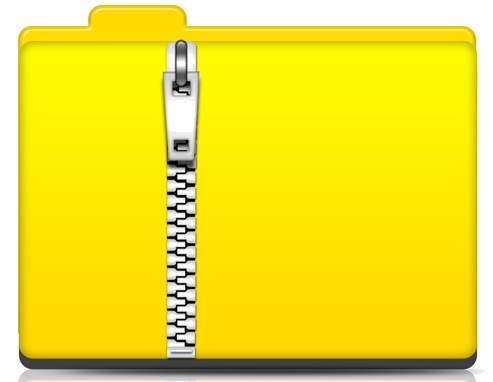Fishing
1971-1998
Dossiers MZ-0068
![]()
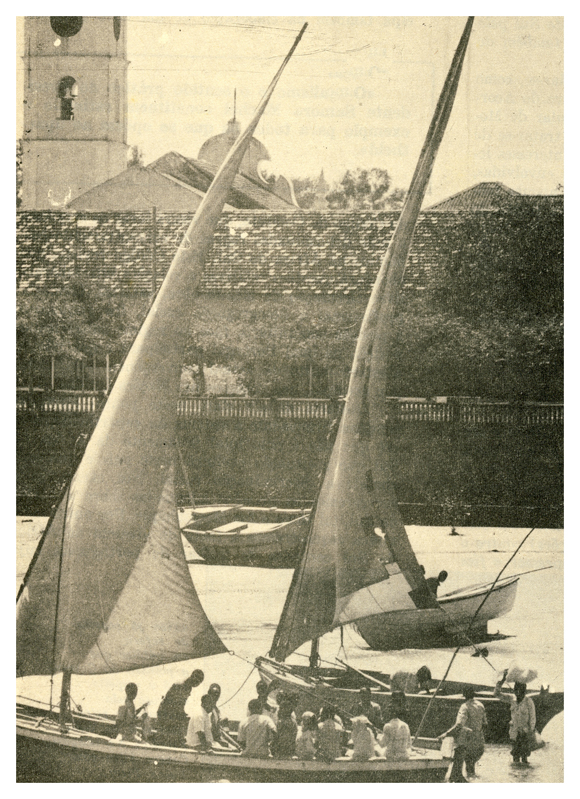
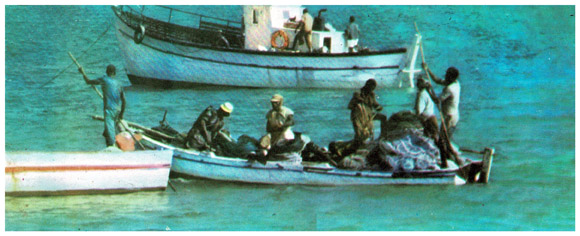
Above top: Fishing boats with their sails aloft at Inhambane. Below: Fishing boats off Inhaca Island in Maputo bay, close to the capital. The bay was already being reported as overfished by 1986, with over 1,000 small boats active in the area and a halt to the issuing of new licences.
Mozambique has a 2,500 kilometre coastline on the Indian Ocean, and its border with Malawi runs in part down the middle of Lake Nyasa. Riverine systems including the Rovuma, the Zambezi (with the artificial Albufeira de Cahora Bassa above the dam), the Limpopo, the Sabe, and the Maputo. Fishing is thus an important economic activity, in both commercial and artisanal forms.
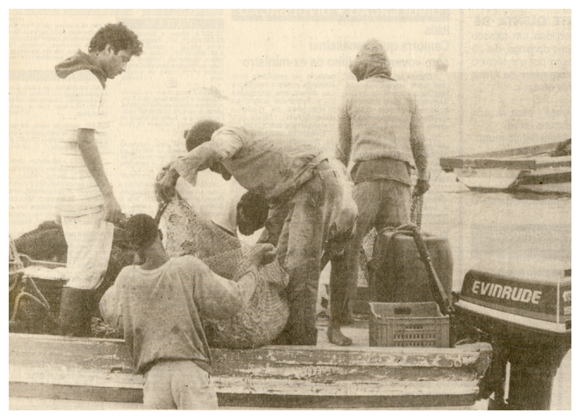
Above: Artisanal fishermen in the early 1990s. Note that the boat is equipped with an Evinrude two-stroke direct-injection outboard motor of US manufacture.
The Portuguese prohibited commercial fishing for most of the colonial period, and only recognised the potential export value of shrimps in the 1960s, when they introduced a small fleet of fishing boats, as well as building some processing plants along the coast. After independence, the Frelimo government established an Exclusive Economic Zone of 200 nautical miles, and negotiated fishing agreements with Japan, Spain, Norway, the EEC, and the Soviet Union. By the 1980s shrimp had become the country's largest export by value. The main state enterprises in the fisheries sector were EMOPESCA, which ran the commercial fishing fleet, and PESCOM International, which was responsible for the export trade, most especially of shrimp.
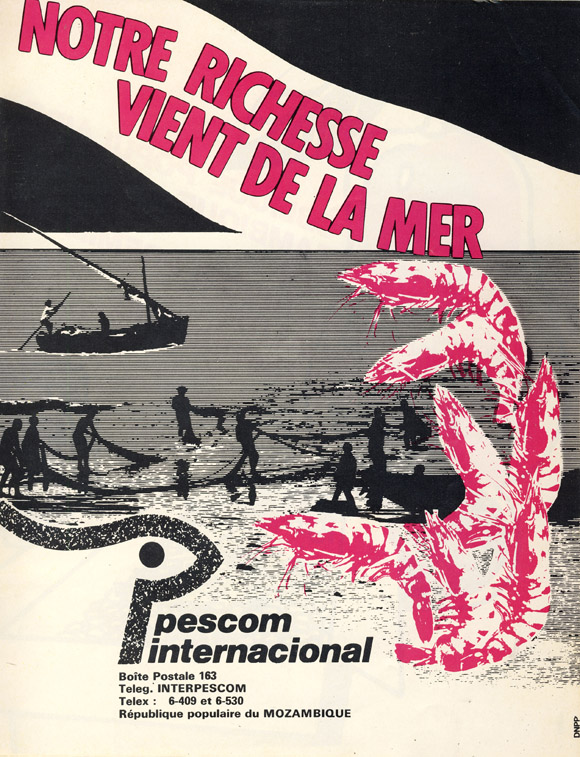
Above: An advertisement placed in a French publication by the Mozambican state fisheries marketing enterprise PESCOM, in July 1980.
In the 1970s the government began to support artisanal fishing, organising fishing cooperatives along the coast as well as on Lake Nyasa. However, the war with RENAMO displaced large numbers of people, some of whom took to fishing as a survival strategy, creating pressure on resources. There is some anecdotal evidence that South Africa may have used fishing boats (as they used submarines) along the Mozambican coast as a means of supplying RENAMO with arms and other materiel, and from time to time boats were captured with great fanfare and their captains fined. The available reports are silent on whether these incidents were related to the war. There is also some anecdotal evidence that SNASP tried to use Mozambican fishing vessels to patrol the coastline, but these also remain unconfirmed.
By the 1990s, with the signing of the Acordo Geral de Paz and the abandonment of centralised economic planning, direct government support for fishing communities and fishing cooperatives disappeared.
_x425.jpg)
Above: Mozambican fishermen displaying a catch, February 1993. Photo: Anthony McMillan.
![]()
MHN Resources
Click on the yellow folder image below to download a zipped file of the dossier of 148 press reports and documents on various aspects of the fisheries sector, all in PDF format. New items will be added from time to time. This version of the dossier is dated 9 March 2021.
![]()



![Aluka: Struggles for Freedom [subscription required] Struggles for Freedom](imgs/aluka_200.png)



